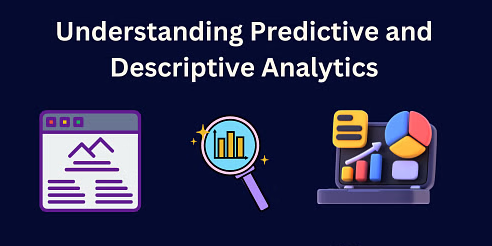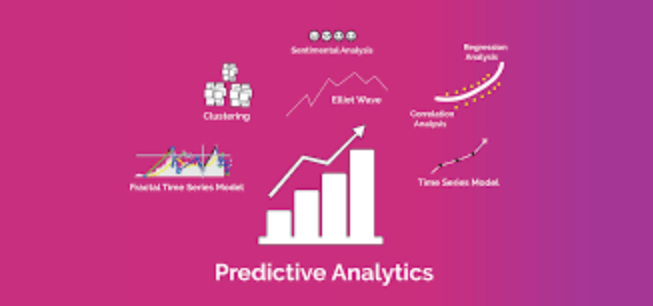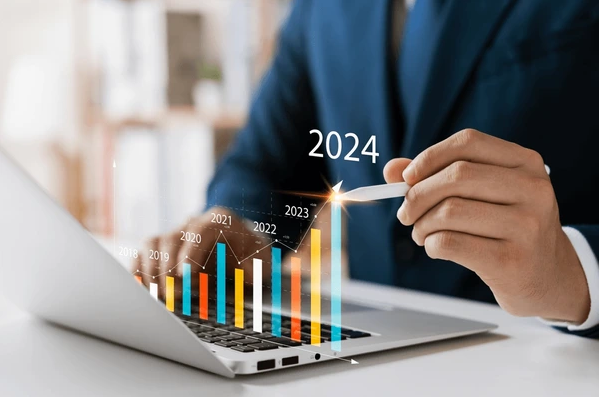Rapid Evolvement of technology has made data a valuable tool for businesses. In 2024, predictive analytics will transform everything for the business and people. In this article we will explain everything about predictive analytics and how you can accomplish growth through this weapon in 2024.

Table of contents
Understanding Predictive Analytics
Still wondering what data analytics is? It’s a process of evaluating, refining and interpreting the raw information into understandable data. As technology continues to grow, data analytics will evolve as well.

Predictive analysis refers to the branch of analytics that focuses on using statistical algorithms and machine learning to evaluate and predict future outcomes. It is not limited to traditional analytics that share an understanding of past trends.
Evolution of Predictive Analysis
Predictive analysis has evolved significantly, leveraging big data and advanced analytics to forecast future outcomes with precision. Initially rooted in statistical models, it now integrates machine learning algorithms capable of handling vast datasets in real-time.

This evolution enables businesses to make data-driven decisions swiftly, optimizing operations, and anticipating customer behaviors. Modern predictive analysis goes beyond traditional methods, incorporating AI techniques to improve accuracy and scalability.
By continuously refining models with new data, organizations gain a competitive edge, foreseeing trends and mitigating risks effectively in dynamic market environments. This evolution underscores its pivotal role in driving strategic decision-making across industries.
How Predictive Analysis Contributes to Business Growth
Predictive analysis plays a crucial role in driving business growth by leveraging data to make informed decisions and anticipate future trends. Here’s a detailed exploration of how predictive analysis contributes to business growth:

Predictive Analysis in Business Growth
- Improved Decision Making: Predictive analysis uses historical data, statistical algorithms, and machine learning techniques to forecast future trends. By analyzing past performance and consumer behavior, businesses can make data-driven decisions that minimize risks and capitalize on opportunities.
- Enhanced Customer Insights: By analyzing customer data, businesses can predict customer behavior, preferences, and needs. This allows for personalized marketing strategies, targeted promotions, and improved customer retention rates.
- Optimized Operations: Predictive analytics can optimize various business operations, such as supply chain management, inventory control, and resource allocation. By predicting demand patterns and operational bottlenecks, businesses can streamline processes and reduce costs.
- Risk Management: Predictive models can identify potential risks and threats to business operations, such as financial risks, market fluctuations, and cybersecurity threats. This enables proactive risk mitigation strategies and enhances business resilience.
- Market Opportunity Identification: Predictive analysis helps businesses identify emerging market trends, consumer preferences, and competitive landscape changes. This allows businesses to innovate products/services and enter new markets strategically.
Technologies Driving Predictive Analytics
There are various technologies driving predictive analytics, while we are going to explain three of them for a better understanding.
- Machine Learning
Machine learning algorithms are at the core of predictive analytics, enabling the analysis of large datasets and the identification of patterns and trends.
- Artificial Intelligence
AI enhances predictive analytics by providing advanced capabilities such as natural language processing and deep learning. This allows for more accurate and comprehensive predictions.
- Big Data Analytics
The availability of big data has significantly boosted the power of predictive analytics. By analyzing large and diverse datasets, businesses can gain deeper insights and make more accurate predictions.
Strategies for Successful Predictive Analytics Implementation
Before implementing predictive analytics, businesses must define clear objectives and goals. This ensures that the efforts are aligned with the overall business strategy. Choosing the right tools and technologies is crucial for the success of predictive analytics.
Businesses should invest in platforms that are scalable, user-friendly, and compatible with their existing systems. Having a team of skilled professionals, including data scientists, analysts, and IT experts, is essential for effective predictive analytics implementation. This ensures that the models are accurate and actionable.
Conclusion
Predictive analytics is a powerful tool that can help businesses stay ahead in 2024 and beyond. By leveraging historical data and advanced technologies, businesses can make informed decisions, enhance customer experiences, and improve efficiency.
As we move forward, the importance of predictive analytics will only continue to grow, making it essential for businesses to embrace this innovative approach.
Read more: Understanding and Utilizing Behavioral Data in 2024
FAQs
Predictive analytics uses historical data, statistical algorithms, and machine learning techniques to forecast future outcomes
Predictive analytics can help businesses understand customer preferences and behaviors, allowing for more personalized and targeted marketing efforts, ultimately enhancing customer satisfaction and loyalty.
Industries such as finance, healthcare, retail, and manufacturing benefit significantly from predictive analytics due to their reliance on data-driven decision-making and the need for accurate forecasting.
Key technologies include machine learning, artificial intelligence, big data analytics, and data mining, all of which work together to analyze large datasets and predict future trends and behaviors.

Alex Mitch
Welcome to my blog! With over 10 years in digital marketing , I’ve seen its incredible impact on smaller businesses. Join me as we explore how digital marketing can grow your audience and boost your business. Whether you’re an experienced entrepreneur or just starting out, you’ll find practical tips and insights to enhance your digital marketing strategies.





